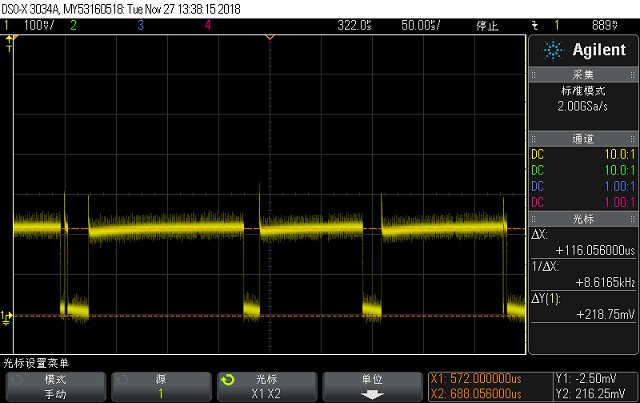Hi James,
Nice to meet here!
Question related to Vilim & “Fault” report, need your helps.
As you described, “the device must hit the Vilim threshold for every PWM cycle within the 275 ms time frame for the fault to report (this is the tilim spec)”, from which can deduce that the voltage of Risense during stall status should present the waveform like as PWM cycle. The following scope waveform is captured from problem which cannot trigger “fault” report. But it likely meet the requirement you described.
"Hit the Vilim" means the high level of the votage of the Risense must be more than 200mv, regardless of low level of the voltage. Could you help elaberate the process of trigger "Fault" report? Recently, encoutering the problem: no "fault" report duing a stall condition. It's urgent for us to solve.
Best regards,
Qingfeng, Yuan



